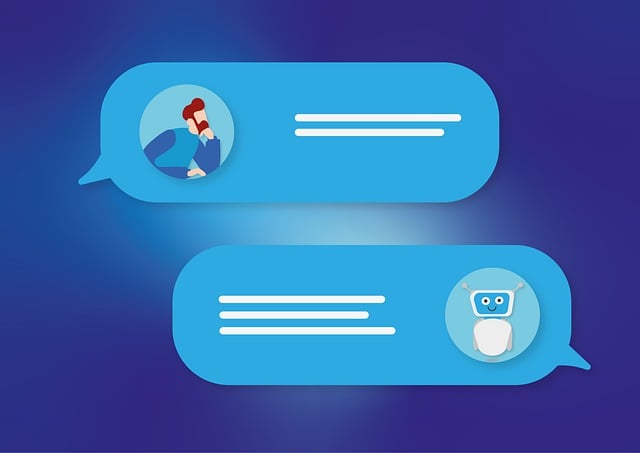Developing a successful chatbot AI requires strategic planning and careful execution. Start by defining its purpose and understanding target audience needs. Design conversation flows, selecting suitable NLP tools like Dialogflow or IBM Watson for efficient development. Train and test the model rigorously using diverse datasets to ensure accurate responses. Deploy on various platforms, continuously improving based on user feedback and NLP advancements.
Creating a scripted AI chatbot isn’t just about coding—it’s crafting a conversational experience. In this comprehensive guide, we’ll walk you through building your own chatbot AI from scratch. From understanding the basics of chatbot AI and defining your purpose to designing engaging conversations, choosing the right NLP tools, training, testing, deployment, and continuous improvement, we’ve got you covered. Unlock the potential of chatbot AI today!
- Understanding the Basics of Chatbot AI: Define Your Purpose and Target Audience
- Designing the Conversation Flow: Creating a Scripted Dialogue
- Choosing the Right Natural Language Processing (NLP) Tools and Technologies
- Training and Testing: Refining Your Chatbot's Performance
- Deployment and Continuous Improvement: Bringing Your Chatbot AI to Life
Understanding the Basics of Chatbot AI: Define Your Purpose and Target Audience

Creating a scripted AI chatbot involves understanding the fundamentals of chatbot AI, starting with defining your purpose and identifying your target audience. Chatbot AI is designed to engage in natural language conversations with users, providing information or performing tasks. Before scripting, it’s essential to determine what problem you want your chatbot to solve or what service you aim to offer. This clarity guides the development process by dictating the chatbot’s knowledge base and conversational flow.
Knowing your target audience is equally crucial. Different user groups have varying expectations and preferences for chatbot interactions. For instance, a chatbot assisting customers in making purchases requires different responses and capabilities than one aiding users in troubleshooting technical issues. Tailoring your chatbot to meet specific needs ensures better engagement, higher satisfaction rates, and more meaningful conversations.
Designing the Conversation Flow: Creating a Scripted Dialogue

Designing the Conversation Flow is a crucial step in creating a scripted AI chatbot. It involves mapping out the potential interactions between the user and the bot, allowing developers to craft a natural and engaging dialogue. This process begins by identifying key user intents and entities—the purposes users might have for interacting with the chatbot and the information they’re likely to seek. From there, developers can create a decision tree or flowchart that visualizes the conversation paths, ensuring a logical and coherent exchange.
By structuring the conversation in advance, developers can anticipate user queries and plan relevant responses. This scripting approach enables the AI chatbot to deliver more precise and contextually appropriate answers, enhancing the overall user experience. It’s about crafting a narrative where each turn feels meaningful, whether it’s gathering information, providing assistance, or simply engaging in casual conversation.
Choosing the Right Natural Language Processing (NLP) Tools and Technologies

When creating a scripted AI chatbot, selecting the right Natural Language Processing (NLP) tools and technologies is paramount to ensure your chatbot’s effectiveness and performance. The market offers a wide array of options, from established frameworks to cutting-edge research platforms. For instance, popular choices like Dialogflow (by Google) and IBM Watson provide user-friendly interfaces for building conversational flows with minimal coding. These platforms excel in understanding natural language, enabling developers to focus on crafting engaging interactions.
For more advanced requirements, open-source libraries such as NLTK (Natural Language Toolkit) and spaCy offer greater flexibility and customization. They provide powerful algorithms for tasks like text classification, sentiment analysis, and named entity recognition, which are crucial for handling complex chatbot ai scenarios. Additionally, these tools often integrate seamlessly with machine learning models, allowing developers to train chatbots on large datasets for improved accuracy and contextual understanding.
Training and Testing: Refining Your Chatbot's Performance

Training and testing are vital stages in developing a high-performing chatbot AI. During training, the model learns from a vast dataset, understanding user queries and generating appropriate responses. This process involves feeding the chatbot diverse examples to ensure it can adapt to various conversations. The quality and diversity of training data significantly impact performance, so careful selection is key.
Testing allows for refining the chatbot’s capabilities. By presenting it with unseen scenarios and evaluating its responses, developers can identify weaknesses and improve accuracy. Automated tests can simulate user interactions, ensuring the chatbot provides relevant and coherent answers. Continuous testing and iteration are essential to achieving a seamless user experience and maintaining the chatbot’s effectiveness over time.
Deployment and Continuous Improvement: Bringing Your Chatbot AI to Life

Once your chatbot AI is scripted and trained, deployment is the next crucial step in bringing it to life. Integrating your chatbot into existing communication channels like websites, mobile apps, or messaging platforms allows users to interact with it seamlessly. This process involves setting up the technical infrastructure, including hosting, API connections, and user authentication systems. A well-designed deployment strategy ensures a smooth user experience and facilitates real-time interactions.
Continuous improvement is essential for any successful chatbot AI. Regularly gathering user feedback, analyzing interaction data, and refining the chatbot’s responses based on these insights are key practices. Over time, this iterative process enhances the chatbot’s performance, accuracy, and ability to understand complex queries. Additionally, staying updated with advancements in natural language processing (NLP) techniques enables developers to incorporate new features, improve context awareness, and provide even more sophisticated user interactions.
Creating a scripted AI chatbot involves understanding your audience, designing engaging conversations, choosing the right NLP tools, rigorous training and testing, and continuous improvement post-deployment. By following these steps and leveraging modern chatbot AI technologies, you can develop an intelligent virtual assistant that enhances user experiences and drives meaningful interactions.
